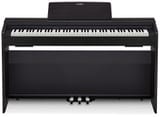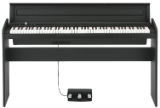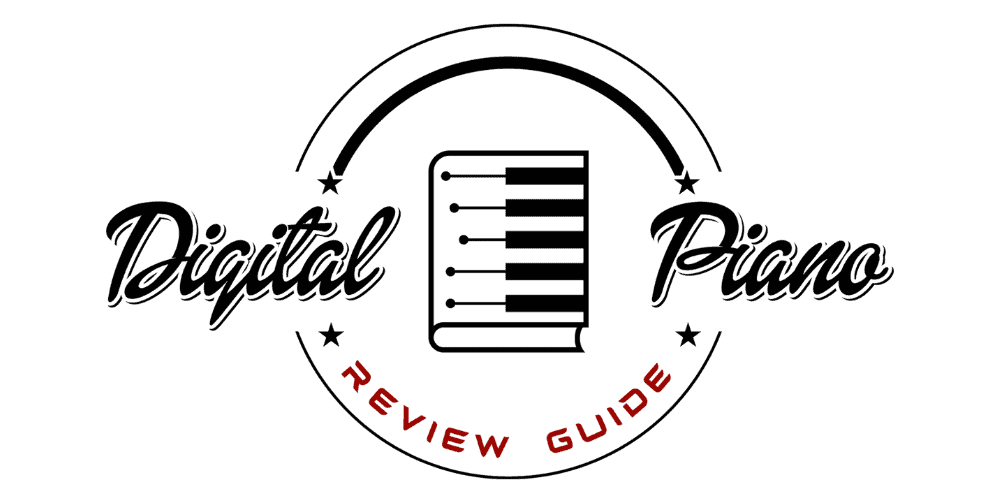Yamaha P-125 vs Yamaha P-45: Review Comparison!

The Yamaha P-125 has recently succeeded the Yamaha P-115, and many people that were interested in acquiring the Yamaha P-45 are now wondering whether the P-125 is worth the extra money.
And due to that, we thought it would be a great time to have a digital piano battle, of sorts. And so, in an in-depth examination of both portable pianos, we’re going to help you determine if you should get the Yamaha P-125 or Yamaha P-45 (and why we feel that way).
To better help you with this very important decision, we’ve created an interactive guide below that will allow you to compare essential specs and features of the Yamaha P-125 against the Yamaha P-45, as well as other popular digital pianos on the market.
Photo Model
![]()
Casio PX-S1100
![]()
Alesis Prestige Artist
![]()
Casio CDP-S360
![]()
Yamaha P-515

Casio PX-870

Korg LP-180

Casio PX-770
Yamaha P-45 vs Yamaha P-125: Common Traits
Okay, so let’s first begin this comparison review by talking about what both of these digital pianos actually have in common—which is quite a bit actually.
First off, both the P-45 and P-125 come from the same line of digital pianos. This means that they are both a part of the P-series of pianos, with the “P” standing for “Portable.”
In short, these pianos are particularly ideal if you’re a gigging musician and need to throw your piano into your car or strap it onto your back or carry it by hand from location to location.
In fact, both digital pianos have a depth of less than 12 inches, so these are lightweight and very compact digital pianos (although to be fair, the new Yamaha P-515—which is at the high end of the “P” line—is not lightweight, coming in at approximately 48 pounds/22 kg).

Below, please take a moment to view some of the best-selling digital pianos currently on sale online:
| BEST SELLERS |
|---|
| 1) Yamaha P-515 |
| 2) Casio PX-S3100 |
| 3) Casio PX-870 |
| 4) Roland FP-E50 |
| 5) Roland FP-30X |
Touch and Feel of Both Pianos
The next thing to note here is the touch and feel of both the Yamaha P-45 and the Yamaha P-125. Again, we have a few more similarities here.
First, both of these pianos come with Yamaha’s Graded Hammer Standard keyboards. Although this is no doubt on the lower end when it comes to Yamaha’s line of graded action, the Graded Hammer Action (or GHS) is no slouch.

As is pretty standard these days when we are talking about quality graded hammer action, both of these pianos’ keybeds will feel heavier to the touch in the lower end and lighter in weight on the higher end of the keyboard.
This is meant to resemble the touch and feel of an acoustic piano that has hammers nestled inside it.
Although both the P-125 and P-45 have the same weighted action, it’s always vital that an aspiring pianist practice on keyboards with action such as GHS because it helps to build strength in your fingers and hands, while also building up important music memory.
It also shortens the learning curve you may incur if you ever were to transition from playing on a digital piano to playing on an acoustic one.
Looks and Interface of Both Pianos
Now, before we move on to some differences between both of these digital pianos, I wanted to take a moment to first discuss one more similarity. And that’s in how these pianos look from a visual standpoint.
The P-45 and P-125 both have a stripped down and highly simplistic look. I wouldn’t go as far as to call these pianos “elegant,” but I would certainly call them minimalist.
The front of both of these pianos feature a mix of buttons, knobs or sliders, and neither have an LCD screen (although there are ways of getting around that, which we’ll discuss soon).
Which Has Better Sound?
Now this is where we start to see some very apparent differences.
Now the Yamaha P-45 has adequate sound. It features AMW Stereo Sampling. The Yamaha P-125, on the other hand, uses the Pure CF Sound Engine, which includes Yamaha CFIIIS 9′ concert grand piano.
But where you’ll notice a difference in the sound is once you sit down to play. While the Yamaha P-45 is adequate in its sound quality, the P-125 has it beat.
In fact, the Yamaha P-125 incorporates a two way speaker system that improves on the sound of the P-115. What this does is it provides a more expansive sound that moves in both an upward and downward direction. Doing this allows the sound to be deeper and richer to the pianist, better resembling the tonal quality of an acoustic piano.
How Does it Compare in Price?
Earlier, I mentioned that the Yamaha P-45 and P-125 are similar in size—and that’s true. But their prices are quite different.
The Yamaha P-45 can be had for approximately $450—a very affordable price if you’re on a budget.
The Yamaha P-125, on the other hand, will run you approximately $600. And although you’re definitely getting better sound quality, if you have a fixed-priced budget, you’re of course going to be more enticed by the cheaper P-45.
How Do Both Pianos Worth with Apps?
This is another area where I think there’s a big difference between both digital pianos.
Now, the Yamaha P-45 can work with some Yamaha apps, like Note Star, which is a more interactive way to turn your iPad into an interactive experience as it pertains to your sheet music.
You can also download the Yamaha Metronome app, or the the Visual Performer app, the latter of which features animations that move to the velocity and pitch coming from your piano. It’s a nice app, but it’s mostly style over substance.
The Yamaha P-125, however, allows you to use what’s called the Smart Pianist app. This app, which works with a very small list of digital pianos (and the P-125 is currently the only portable Yamaha piano that works with this app) allows you to do many important things.
First, remember when we talked earlier about the look of the P-125, and how it’s minimal in its style? The biggest thing some people might want on this digital piano is a LCD screen, right?
Well, if you connect your iPhone or iPad (sorry, there’s no Android functionality available for the Smart Pianist app) to your P-125, you’re able to instantly get a very interactive way to experience your digital piano.
Because now, with the touch of a button, you can change functions of your Yamaha P-125. Instead of hitting buttons and knobs repeatedly to get to certain Voice or Layer functions, you can simply hit a button on your iPad.
Interested in splitting the left half of the keyboard into an electric bass and the right half into a pipe organ? No problem with the Smart Pianist app.
The app also allows you to record you piano creations and save them, so you can go back and listen later or share with a friend.
But one of the most enjoyable features that comes with this particular app is what’s called Chord Chart. In short, this feature allows you to play a song that’s in your music library, and Chord Chart will immediately analyze the track.
Soon, Chord Chart will begin displaying the music’s chord symbols—while the song is playing. So, ultimately, this feature allows you the ability to play along with your favorite song, making it both a fun feature and a learning feature.
It should be noted, however, that as unique as this feature is, it’s not perfect. More specifically, it’s likely not going to be able to successfully analyze every song in your music library. In fact, even Yamaha themselves claim the app does a good job at analyzing tens of thousands of sounds.
Not millions of songs. Tens of thousands.
Songs that are more complex when it comes to harmony are not ones well suited to work with the Chord Chart feature.
With that said, Yamaha provides you with a short list of artists and songs that are going to be a pretty good match for this feature. And so, if you play a lot of songs that are similar to John Lennon’s “Imagine” or the Righteous Brothers’ “Unchained Melody” or Oasis’ “Wonderwall,” then you’ll likely have a lot of fun with Chord Chart.
Yamaha P-125 vs Yamaha P-45: Conclusion
Ultimately, the decision comes down to need and budget. I think that if the Yamaha P-125 ticks off a lot of your personal boxes when it comes to things you most look for in a digital piano (sound, integration with technology, etc), then it’s worth spending the extra money to get.
I think that if you’re working with a limited budget, and you’re okay with dealing with a digital piano that’s sound isn’t as good as the P-125’s, has a lower polyphony count (64-notes to the P-125’s 192-notes) and less voices overall (10 voices to the P-125’s 24 voices), you’ll likely be very happy with the P-45.
While I think the Yamaha P-125 is the superior instrument, you ultimately can’t go wrong with either choice.
- If you enjoyed this article, we’d love for you to “like” our Digital Piano Review Guide Facebook page!






